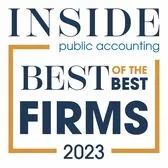Whether Vice President Harris or former President Donald Trump takes office in January, the bipartisan Federal Opportunity Zone (OZ) program must remain in effect through at least December 31, 2026. As you’ll see why shortly, I’m confident either candidate will see the wisdom of supporting pending bipartisan legislation to extend the OZ program through 2028 if elected.
Since being ushered in as part of the 2017 Tax Cuts & Jobs Act, the OZ program Opportunity Zone (OZ) program has proven to be a unique and impactful economic development tool that has helped residents, workers and small business owners in economically challenged neighborhoods in every single state and U.S. territory.
The versatile OZ program can help fix a variety of current and national challenges (without requiring additional government funds) in such areas as housing, infrastructure, domestic manufacturing, onshoring, energy production, green jobs, technology/AI, biotech, medical, agriculture and defense industries. Both Presidential candidates have promised to address these issues in their campaigns, by the way.
How OZ is funded
Unlike most government infrastructure and economic development programs the OZ program does not require additional tax revenue from all Americans. Instead, it raised funds by allowing any investor to defer capital gains from the sale of most types of appreciated assets including real estate, stocks, businesses, personal residences, collectibles, even crypto, through the end of 2026. The deferred appreciation is invested into one of more than 8,700 distressed areas of the United States via a Qualified Opportunity Fund (QOF). Investors can invest in any QOF, regardless of where they live or work.
While President Trump gets (takes) credit for passage of the 2017 OZ legislation, the OZ program actually has its origins under the Obama Administration and was spearheaded jointly by Senator Corey Booker (D-NJ) and Senator Tim Scott (R-SC).
The objective of the OZ program is to raise funds by incenting taxpayers with concentrated gains in stocks, real estate, family businesses or other assets to liquidate such investments, and use those gains to invest in neighborhoods that would generally not attract development dollars. In exchanges for their investment, investors are permitted to defer paying taxes on those capital gains for a number of years and receive additional capital gains relief from appreciation in their QOF investment. Because of the “long-term hold” nature of the OZ program, investors engage in “patient capital” rather than speculation, to help make a difference in disadvantaged areas.
To participate the taxpayer just needs to make their investment into a QOF within 180 days of the gain reporting date. If the gain is coming through a K-1 of an LLC/ partnership, S Corporation or an estate or trust, the start of the 180-day period can be delayed until March 15th of the year following the gain date. The QOF then deploys those gains into qualifying real estate or operating businesses located within one of the 8,700+ designated OZ census tracts. Every state has OZ census tracts, which were designated based on relative population in each state. Therefore, California has the most and Wyoming has the least.
The taxpayer can invest into their own “captive” OZ fund that they completely control or a third-party OZ fund where others control the fund. OZ fund investments can be either real estate projects, operating businesses or a combination of both. 70% or more of the physical assets must be located in one or more of the OZ census tracts during the investment period.
By keeping their invested gains in place by following the OZ operational requirements during the initial deferral period ending December 31, 2026, investors don’t pay federal (and the vast majority of state) tax on those gains until at least April of 2027. As touched on earlier, f they hold the investment for the full 10-year period beginning on their initial QOF investment date, all post-reinvestment appreciation from their original QOF investment will be excluded at the federal level and at the state level in all but six states. This has a dramatic impact on the after-tax cash investors will walk with.
Advantages of doing business in an Opportunity Zone
QOFs have raised an estimated $150 billion in equity since the program began in 2018 – far surpassing the most optimistic projections. Total OZ investments are likely much higher due to debt-leverage as well as many unreported projects by family offices and high net worth individuals.
People typically associate OZ funds with real estate development, but about 25% of our firm’s OZ work involves helping operating businesses located within OZ census tracts (QOZBs) and based on my discussions with other OZ leaders, that ratio is fairly typical.
For startups or existing businesses looking to relocate to an Opportunity Zone, there are many considerations beyond attracting investors. Opportunity Zones often have more affordable real estate, plentiful labor, lower rental rates, and lower operating costs, all of which can help businesses save money on their real estate development or on their start-up expenses.
The OZ program can apply to both ground-up construction projects as well as real estate rehabilitation or expansion projects. For operating businesses, the program can work for new businesses, the relocation of a non-OZ business into an OZ location, or the expansion of an existing OZ business into a larger business.
Ways to improve the OZ Program
As a practicing CPA for over four decades, I believe the OZ program is by far one of the best economic development programs I have ever worked with. It is very taxpayer-friendly, and the administrative burden is relatively low compared to a number of other federal tax programs.
Despite the OZ program’s success to date, there are a number of enhancements that could further help the communities and particularly the residents in these OZ census tracts:
- Tax-exemption for interest earned on loans to OZ real estate projects and operating businesses. Currently only equity infusions are eligible for the tax benefits. To encourage banks, private equity and personal lenders to fund OZ projects, a tax exemption for lenders making below-market loans to OZ funds would be well received by the OZ community and expand the number of projects and start-up businesses.
- Add a training and/or new hiring credit for any employees hired by the OZ fund provided the employee lives in an OZ census tract or a census tract adjacent to an OZ project or business.
- Shorten the 10-year hold period to five years provided that the OZ Fund and QOZB (subsidiary entity) average at least 25% local hiring as measured by Full-Time Equivalent (FTE) headcount over the operating period prior to sale (minimum 5 years). A “Local Hire” will include any employee who was a resident of an OZ census tract, or resident of a census tract adjacent to the real estate project or OZ operating business, or who was receiving government assistance prior to being hired.
- Allow the full (or partial) federal tax exemption on all fund appreciation after the 10-year hold, even on equity investments made by investors not deferring a capital gain from a prior sale. This expands the investor base beyond taxpayers with a recent capital gain to invest.
Again, bipartisan legislation is pending to extend the OZ program through December 31, 2028, and I’m hopeful that both candidates will see it through to help fulfill their campaign promises.
The OZ program is a proven program that can continue to benefit the underserved communities, the trades involved in construction as well as Wall Street and Main Street.


